This article contains spoilers for Ant-Man and the Wasp: Quantumania in its discussion of the character of M.O.D.O.K.
One of the big recurring arguments made in favor of the Marvel Cinematic Universe (the MCU) is that the shared universe isn’t embarrassed to be based on comic books, that these films celebrate the legacy and the absurdity of superhero comic books without needing to cloak them in the tropes and conventions of more “serious” fare. The most superficial example is that, by and large, these movies eschew the “black leather” look of earlier superhero franchises like X-Men.
However, there is something unconvincing in this argument, and it is demonstrated by the use of M.O.D.O.K. in Ant-Man and the Wasp: Quantumania. For those unaware of the character, M.O.D.O.K. is a Mental (sometimes Mobile or Mechanized) Organism Designed Only for Killing. The villain was created by Stan Lee and Jack Kirby as an antagonist for Captain America during their Tales of Suspense run in the late 1960s. He has become a comic book fixture.
M.O.D.O.K. is a fundamentally absurd character. He is one of those great Jack Kirby designs, a distinctive visual that blends Kirby’s blocky designs and science-fiction sensibility. M.O.D.O.K. is essentially a giant floating head that sits in a floating purple chair equipped with a variety of murderous implements, his limbs dangling out like a child at an amusement park. M.O.D.O.K. looks ridiculous, but also awesome. He’s a character that could only have come from superhero comics.
M.O.D.O.K. has never really been an A-list supervillain. He’s nowhere near as important to the history of the comic book universe as the Red Skull, Baron Zemo, or even Arnim Zola. However, comic book writers tend to love the inherent insanity of the premise and comic book artists seem to love illustrating him, so variations of M.O.D.O.K. pop up quite regularly, whether spoofing the then-current president of the United States or even anchoring his own tie-in to Secret Wars.
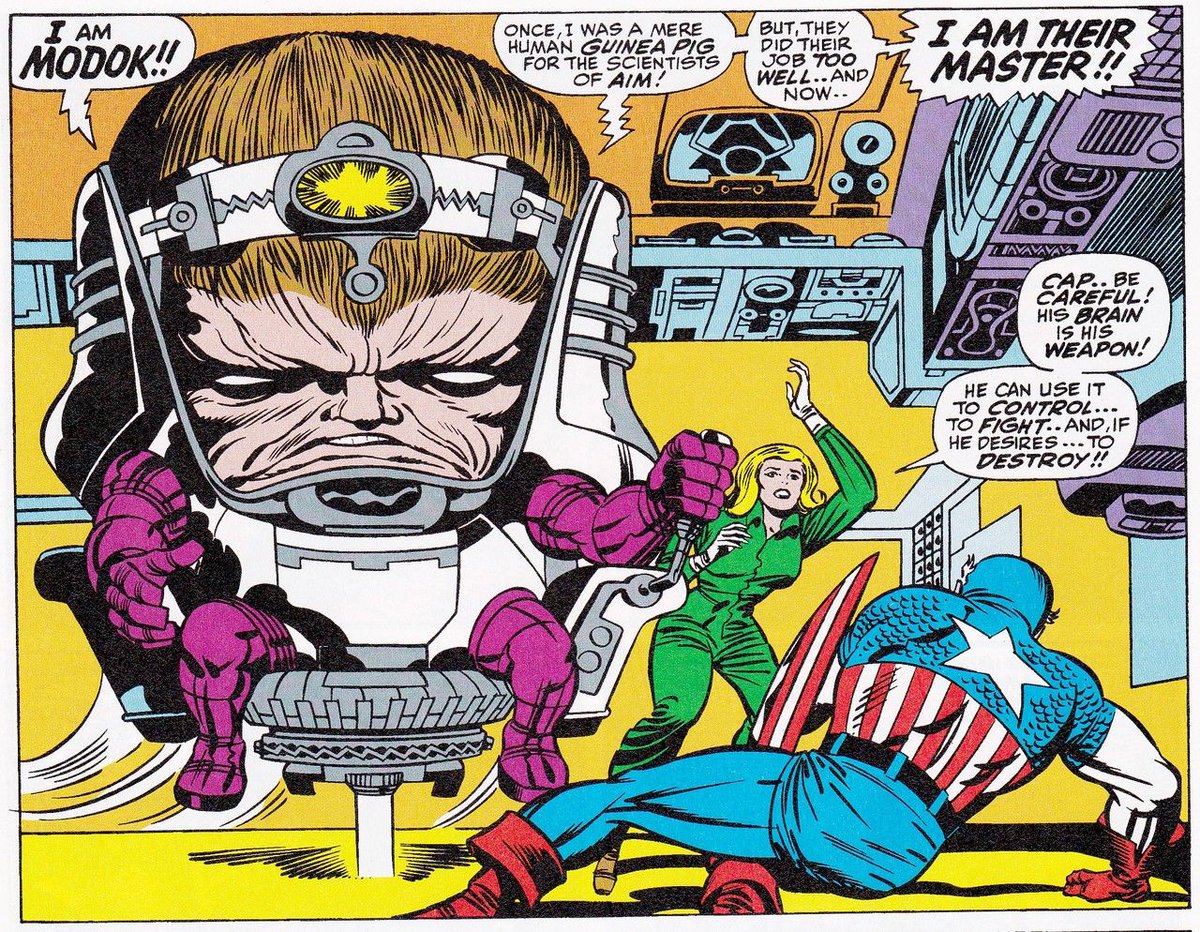
It makes sense that M.O.D.O.K. has appeared with some frequency in animation that can lean into the absurdity of the premise. He got his own unlikely love story in The Superhero Squad Show and even headlined a short-lived stop-motion show on Hulu starring Patton Oswalt. However, despite his status as something of a cult curiosity, it was always going to be a challenge to bring M.O.D.O.K. into live action. On some level, Ant-Man and the Wasp: Quantumania deserves credit for even trying.
To be fair, Quantumania gets a lot of the broad strokes right. The film understands that M.O.D.O.K. probably isn’t a compelling enough antagonist to anchor his own film,so he is framed as a secondary villain next to Kang the Conqueror (Jonathan Majors). There is nothing inherently wrong with this. So much of the charm of M.O.D.O.K. lies in the character’s unique design, and the movie makes a point to preserve a lot of it — the giant head, the floating chair, the tiny limbs.
Unfortunately, there is also a sense that Quantumania is anxious what non-comic-book fans will make of M.O.D.O.K. After all, despite its reputation for embracing its comic book roots, the MCU spends a lot of time grounding its goofier elements. While they don’t wear black leather, most of the universe’s heroes wear colored body armor rather than actual costumes. When traditional costumes appear, as in WandaVision or Captain America: The First Avenger, they often appear only briefly and primarily as knowing in-jokes.
This design aesthetic is obvious even with Kang. Kang is admittedly one of the goofier-looking Avengers villains, with his square helmet and invisible force field futon. Quantumania preserves a lot of this, giving Kang his traditional costume and blue mask. However, the film also insists on adding grittier touches, such as incorporating the vertical lines on the character’s mask as a set of matching facial scars, just to reassure viewers that Kang is a badass and not a silly comic book character.
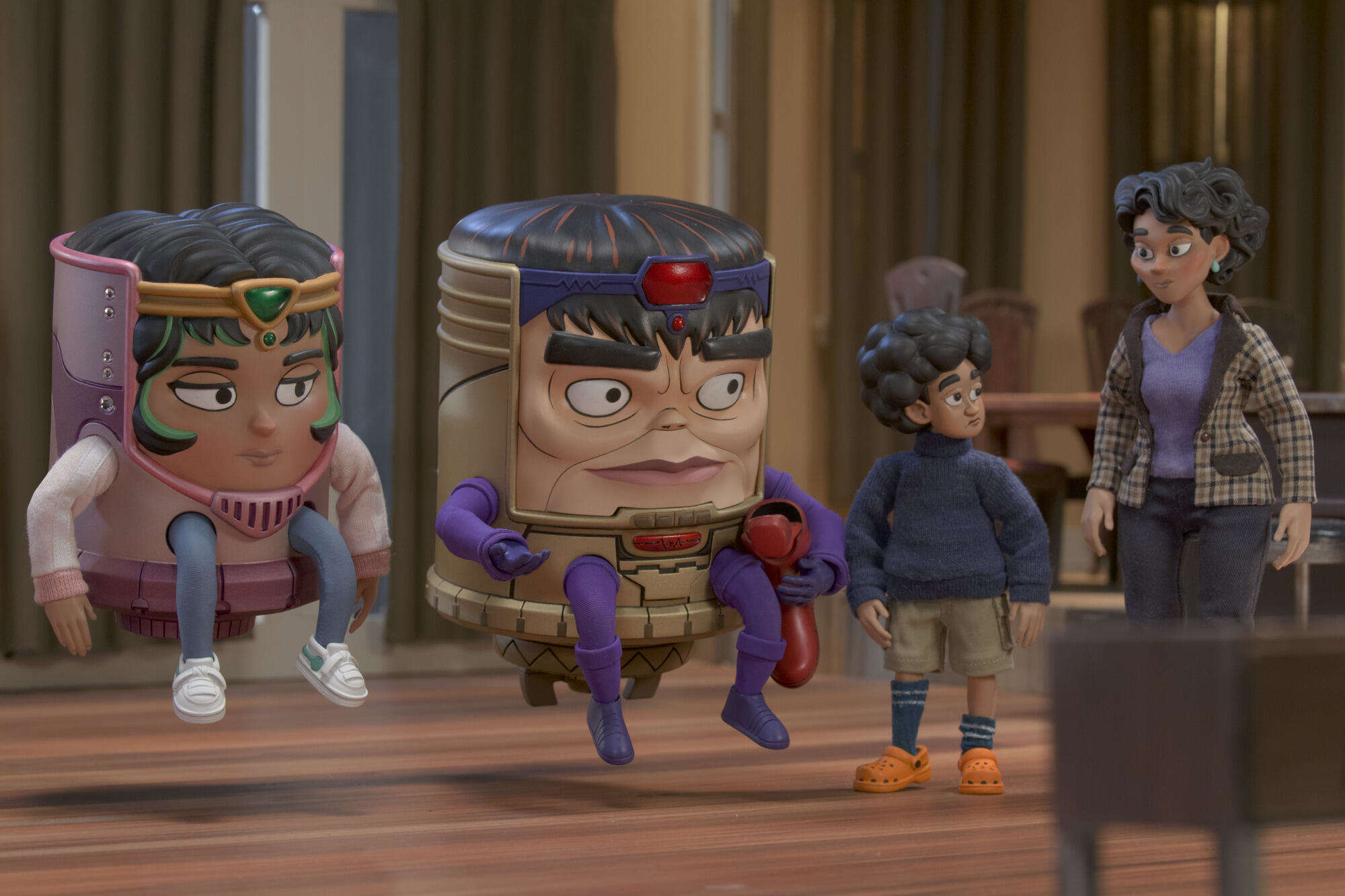
More to the point, Quantumania hedges with the introduction of M.O.D.O.K. The comic book character is absurd, but that absurdity comes from playing him relatively straight; he’s a psychotic and grotesque monster that is devoted to violence for its own sake. There is a commitment to the bit. M.O.D.O.K. might be ridiculous, but he’s also just something that happens in this insane world of larger-than-life superheroes. There’s no tether to reality and no attempt to undercut him.
Quantumania is terrified that the audience is going to laugh at M.O.D.O.K. More to the point, Quantumania is scared that the audience will assume that the movie isn’t in on the joke. The concern is that filmgoers will look at M.O.D.O.K. and assume that this creation is a failure — that M.O.D.O.K. was meant to be taken seriously, but the movie failed to make him badass. So, Quantumania goes out of its way to make it clear to the audience that it knows M.O.D.O.K. is silly. Everybody is in on the joke.
So Quantumania gives M.O.D.O.K. a backstory that he really doesn’t need, revealing that he is actually the villainous Darren Cross (Corey Stoll) from the original Ant-Man movie. This is a staggeringly ill-judged choice on multiple levels. Most obviously, Quantumania ditches most of the charming supporting cast from the previous two movies: Michael Peña, Judy Greer, Bobby Cannavale. It weirdly seems to assume that Cross’ character arc needs closure.
There is a fundamental absurdity in bringing back Darren Cross, one in the franchise’s long line of generic, business-suited antagonists. The film makes a big deal of how Cross brought Scott Lang (Paul Rudd) into the Quantum Realm for revenge, but then it replays footage of Cross from the original Ant-Man to remind the viewer of who this is. It’s a callback to a character that the film assumes the audience has forgotten, as if M.O.D.O.K. needs to be buttressed by tying into an existing character.
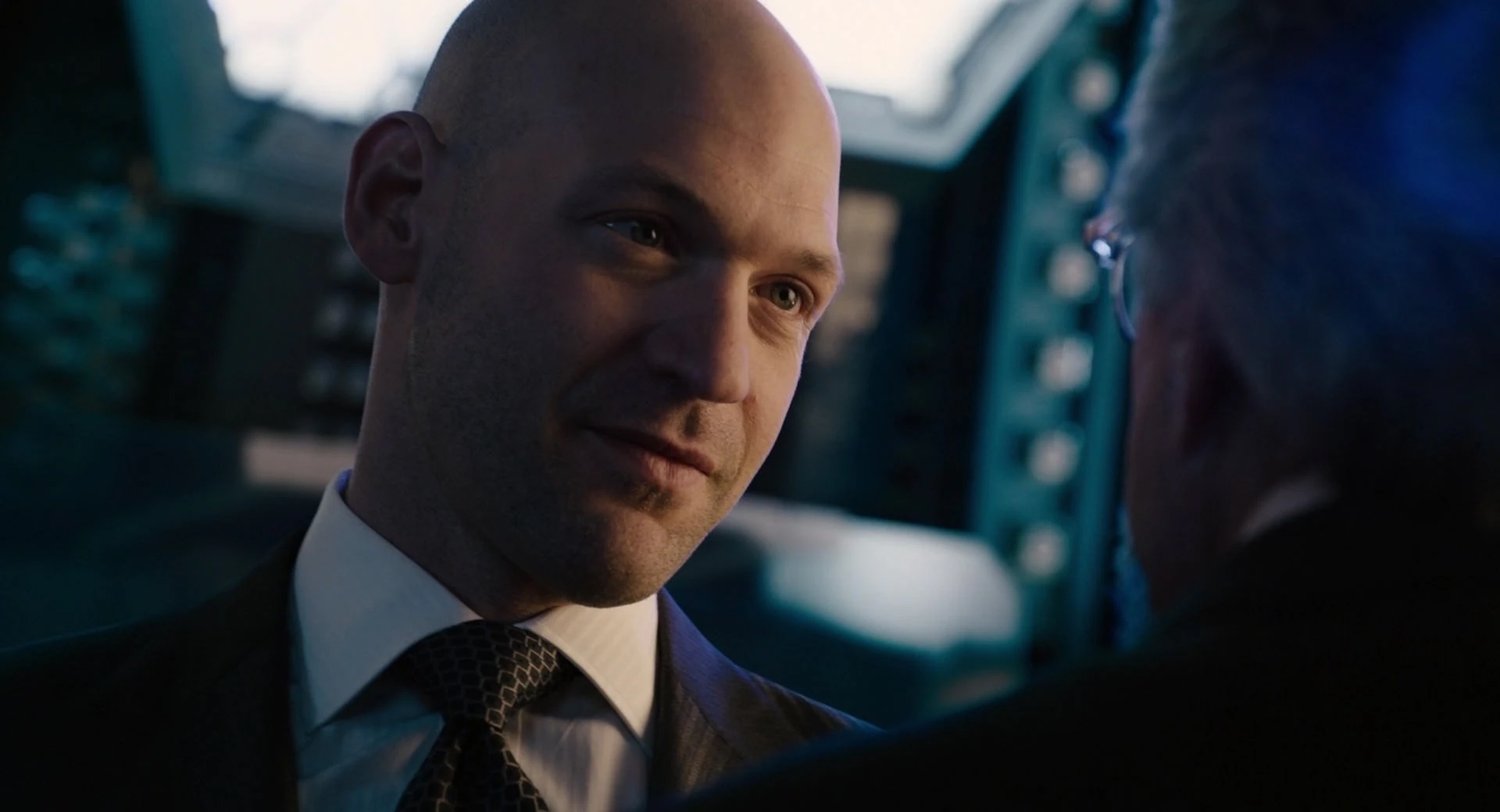
This lack of commitment is also reflected in the character’s design. While the film preserves M.O.D.O.K.’s basic template, it seems unsure how to realize the character in live action. Ultimately, Quantumania stretches Stoll’s face horizontally to fill the space within the costume, preserving the proportions of his features. This misses the gnarly appeal of M.O.D.O.K.’s design, how his facial structure is uncanny and disproportionate — a big forehead and big eyes juxtaposed with a small nose.
The problems with M.O.D.O.K. run deeper than the film’s decision to anchor him in continuity and the refusal to lean into the character’s body horror design. Quantumania is so concerned that the audience will think that the character is a joke that the film refuses to let him be anything else. Early in the film, characters like Krylar (Bill Murray) and Jentorra (Katy O’Brian) deliver a lot of exposition about the horror of M.O.D.O.K., but this is just setup for the punchline of his appearance.
Once Quantumania has revealed M.O.D.O.K. in all his glory, the film refuses to take him seriously. He rants and he raves, but he is never a credible threat. He is a comic relief henchman to Kang, and the movie implies that even Kang doesn’t take him seriously. It’s one of the many choices in the movie that ultimately diminishes Kang. M.O.D.O.K. is supposed to be one of the Conqueror’s great inventions — something truly horrific that underscores Kang’s depravity — but ultimately he is a punchline.
After all, much has been made of how Quantumania is trying to position Kang the Conqueror as a worthy successor to Thanos the Mad Titan (Josh Brolin). However, Thanos’ henchmen generally took themselves seriously. In the comedic Guardians of the Galaxy, Ronan the Accuser (Lee Pace) is introduced bathing in his enemies’ blood and is never quipping or laughing. Even when Loki (Tom Hiddleston) becomes the butt of the joke in The Avengers, there is a sense of pathos.
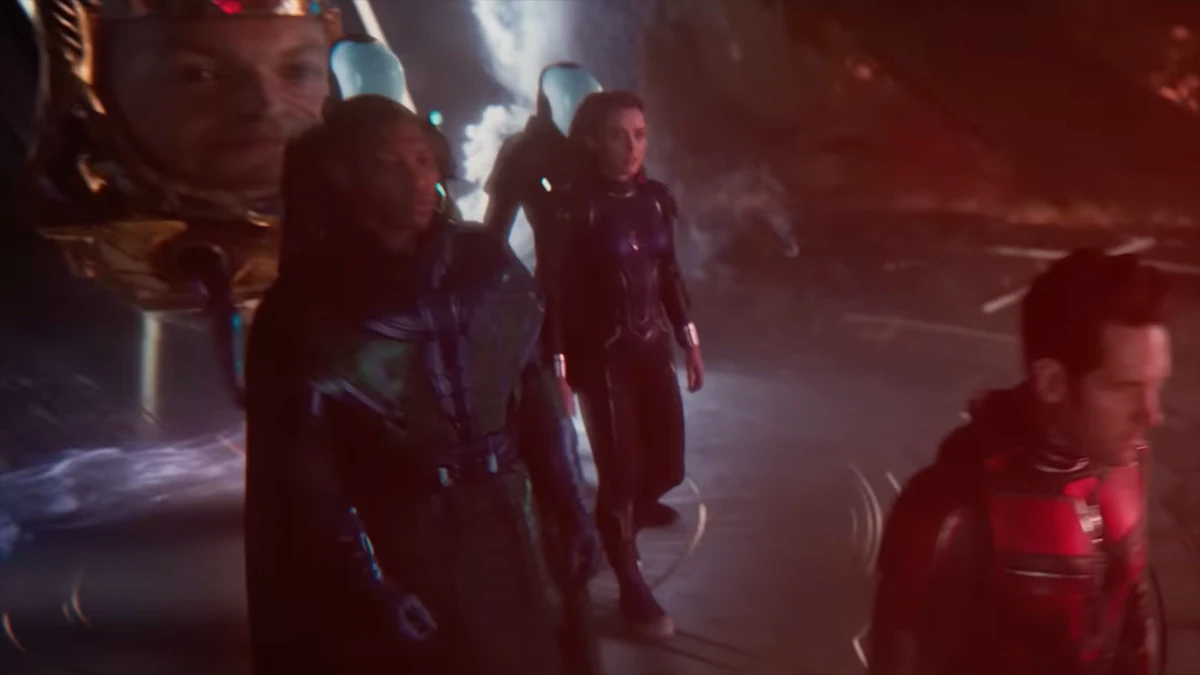
None of this is to suggest that M.O.D.O.K. needs to be presented as an especially serious-minded character, but Quantumania suffers from its refusal to treat the villain as anything more than a silly punchline and a continuity reference. The film even gives M.O.D.O.K. its most overtly comedic arc, in which Cross eventually learns to “stop being a dick” and turns against Kang. Even then, it’s a joke; M.O.D.O.K. claims he dies “as an Avenger,” and Scott patronizingly humors him.
Part of the beauty of superhero storytelling lies in the way that it can render the ridiculous and the absurd emotionally engaging. Guardians of the Galaxy turns Rocket (Sean Gunn, Bradley Cooper), a talking raccoon, into a genuinely tragic figure. The Suicide Squad ends with the heartbreaking death of a giant purple starfish monster that laments in its dying breath that it “was happy, floating, staring at the stars.” These movies work because they refuse to hide their comic book premises behind layers of ironic detachment.
M.O.D.O.K. is far from the biggest issue with Quantumania, but he is indicative of larger problems. Quantumania is a movie that aims to be a big and bombastic celebration of the weird and wacky world of comic book storytelling from a studio that has built its brand around its “respect” of the source material. It would be easier to take that seriously if it enthusiastically embraced the absurdity of a concept like M.O.D.O.K., rather than making sure the audience knows that it’s laughing at it.

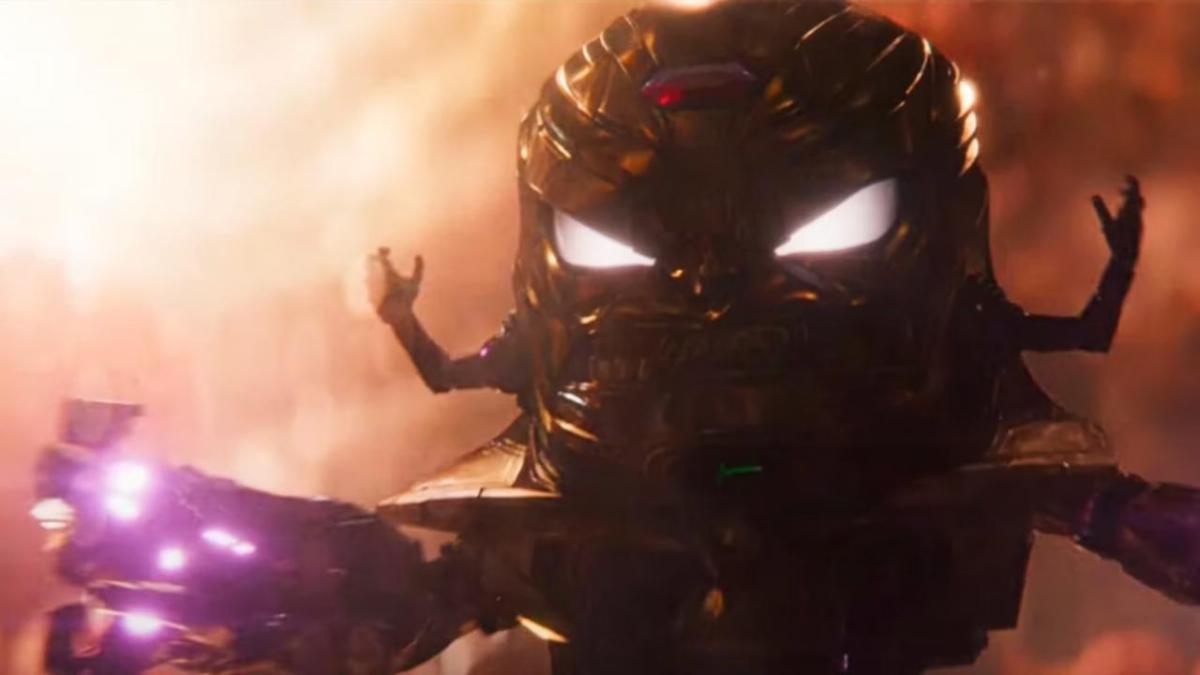




Published: Feb 18, 2023 11:00 am